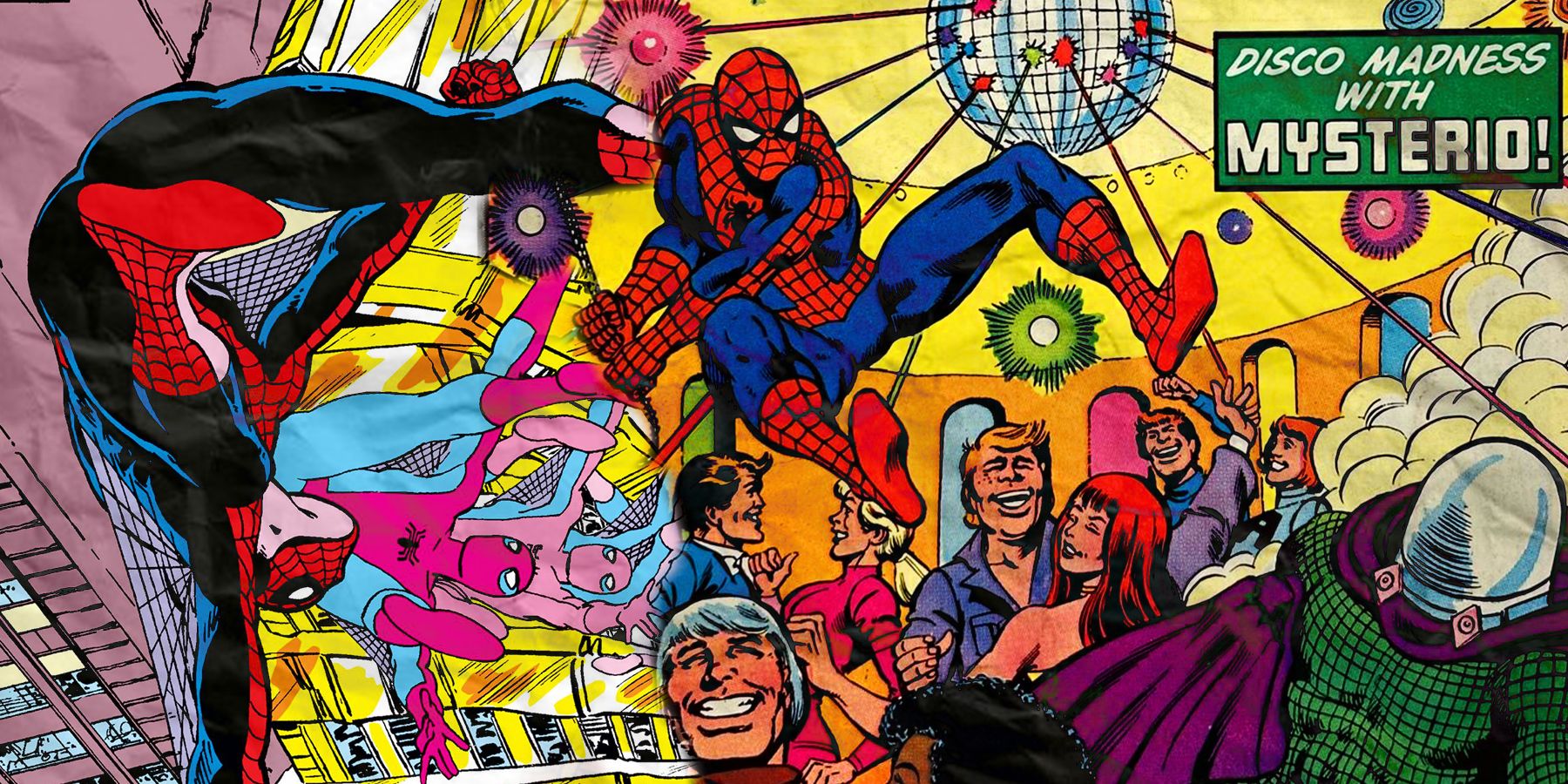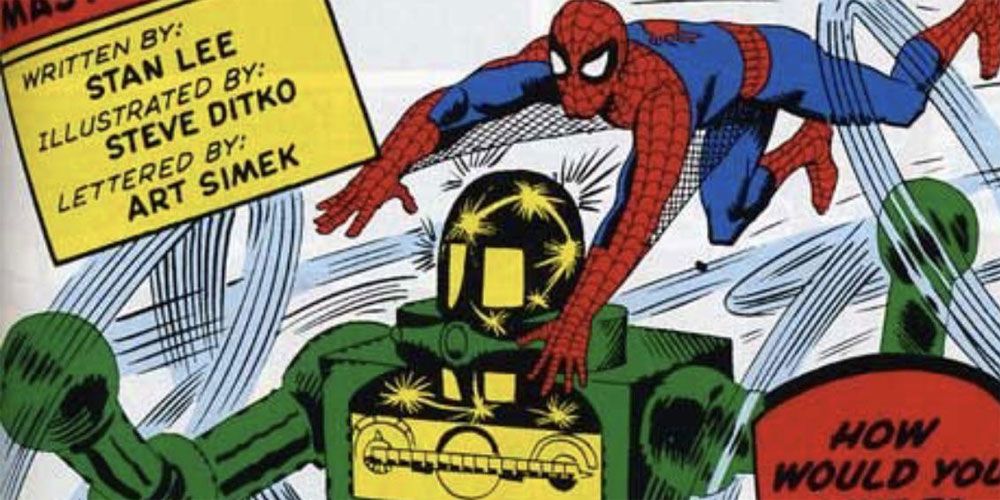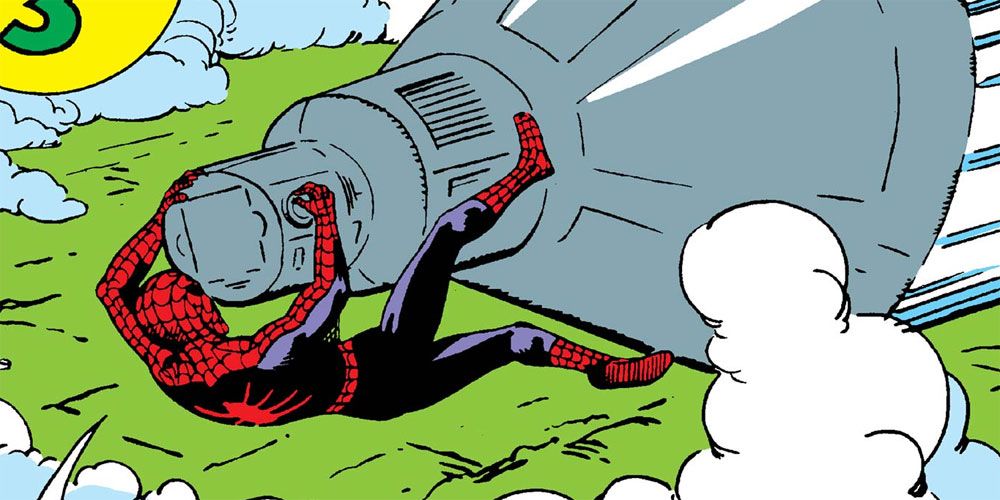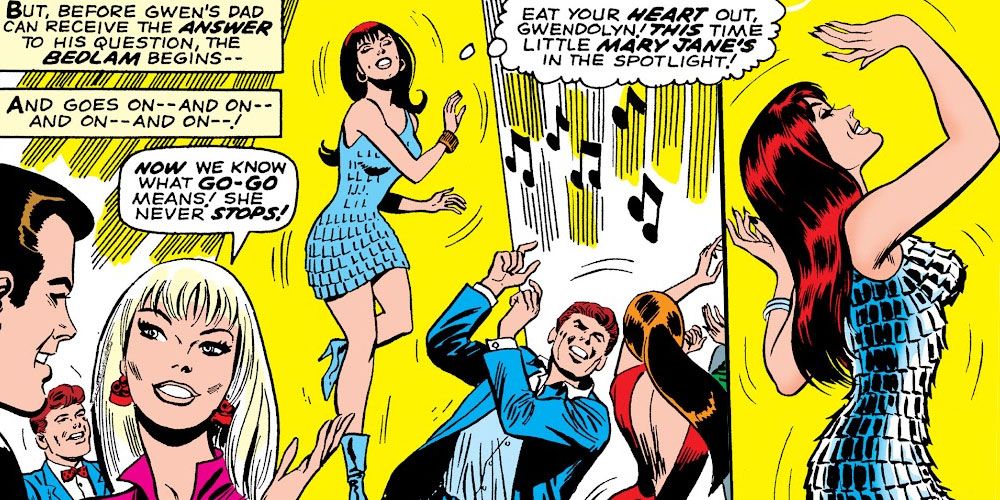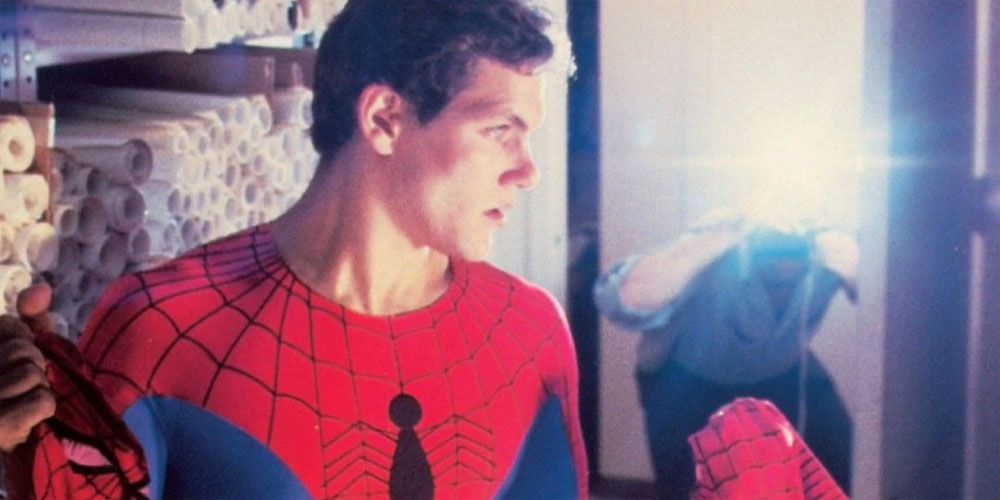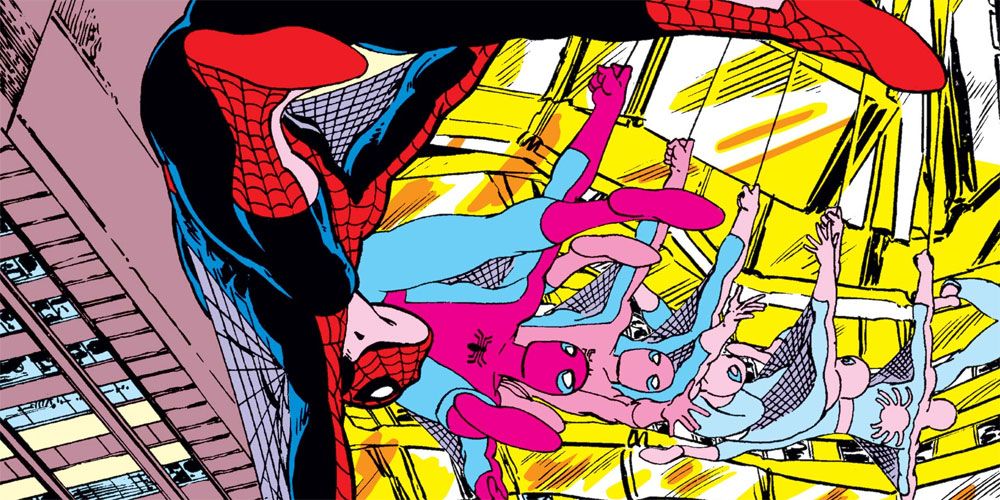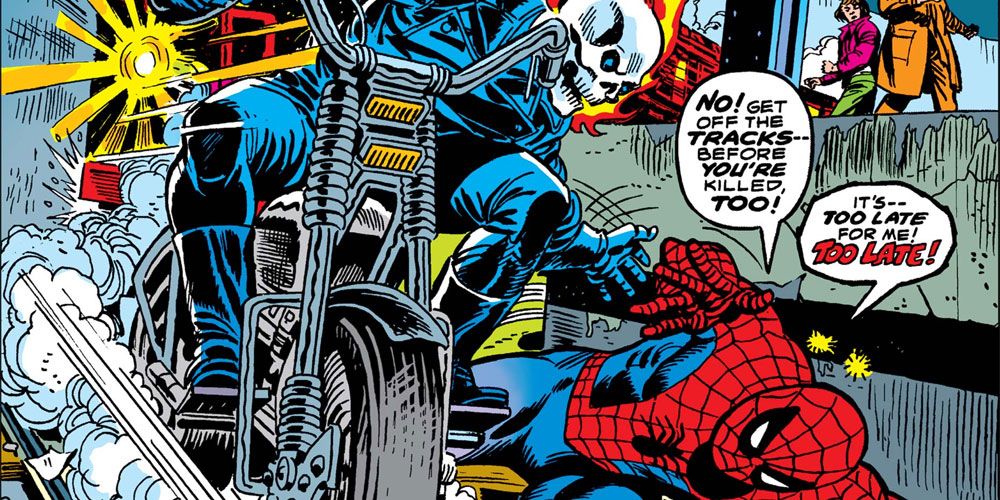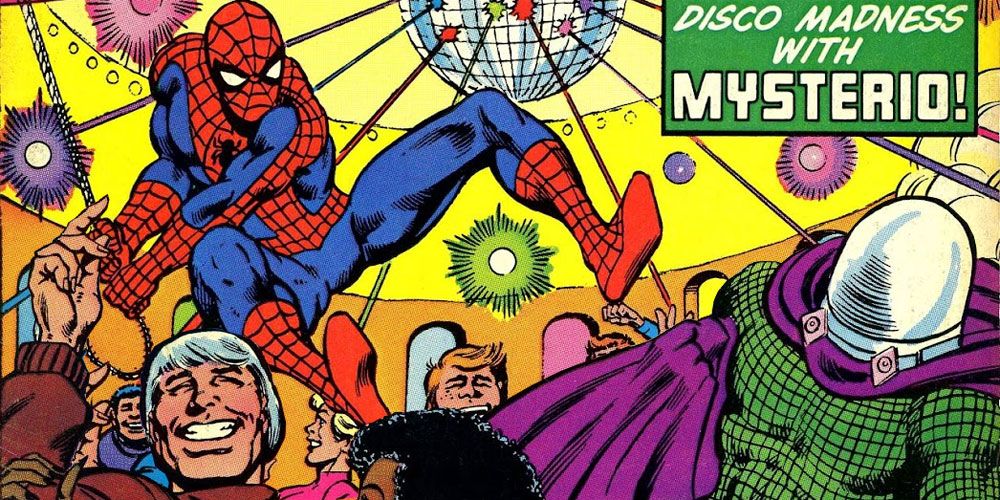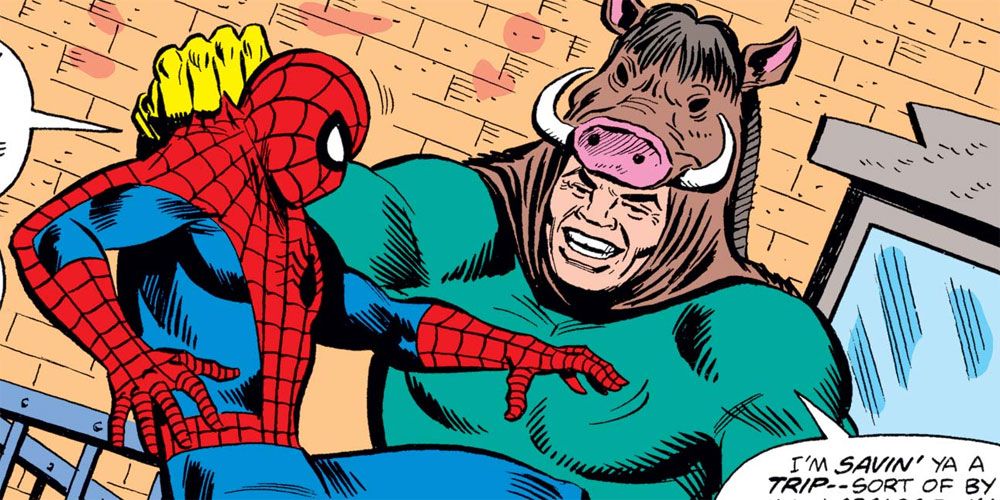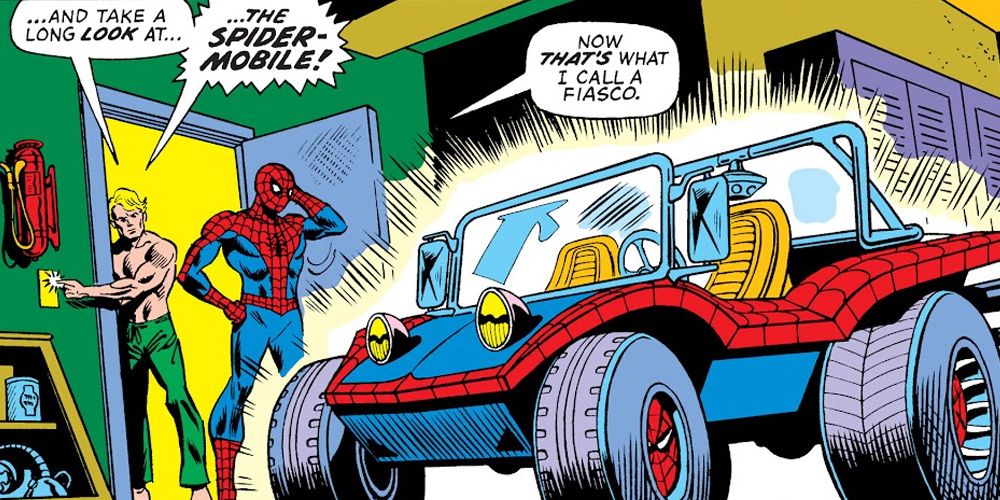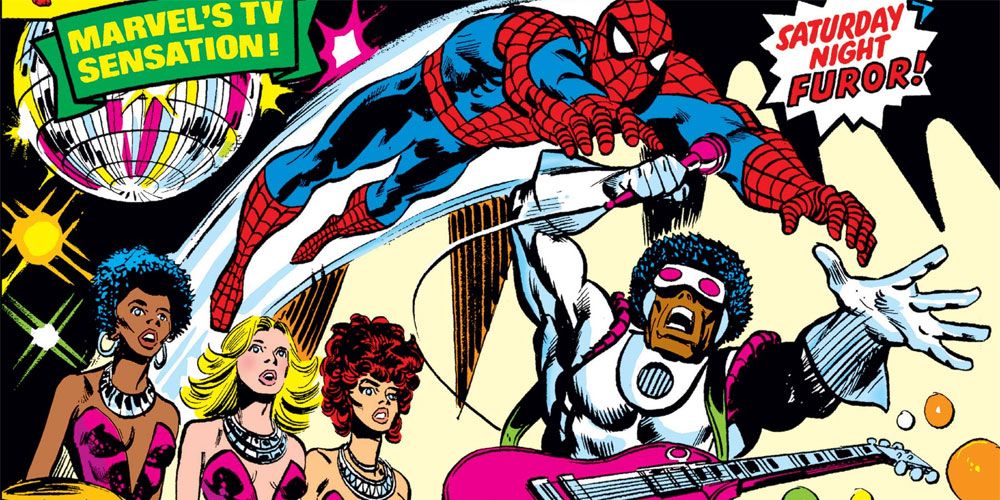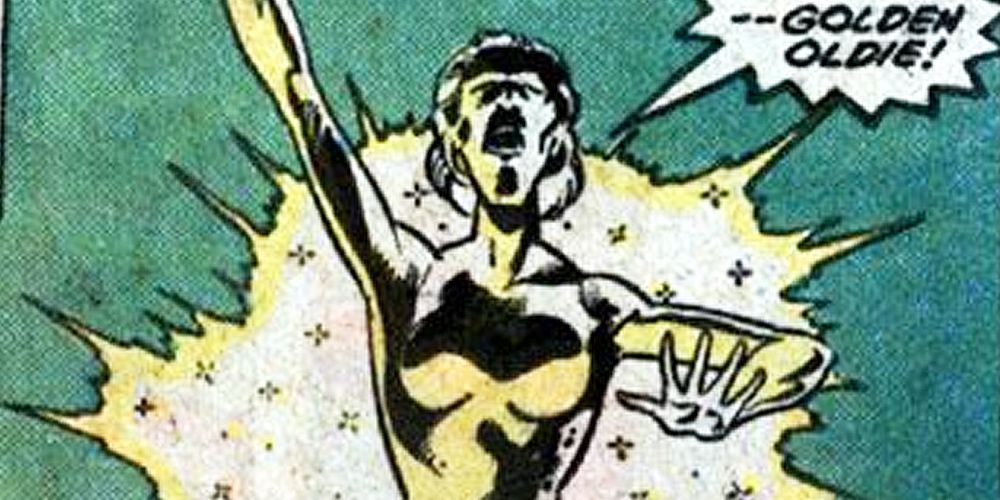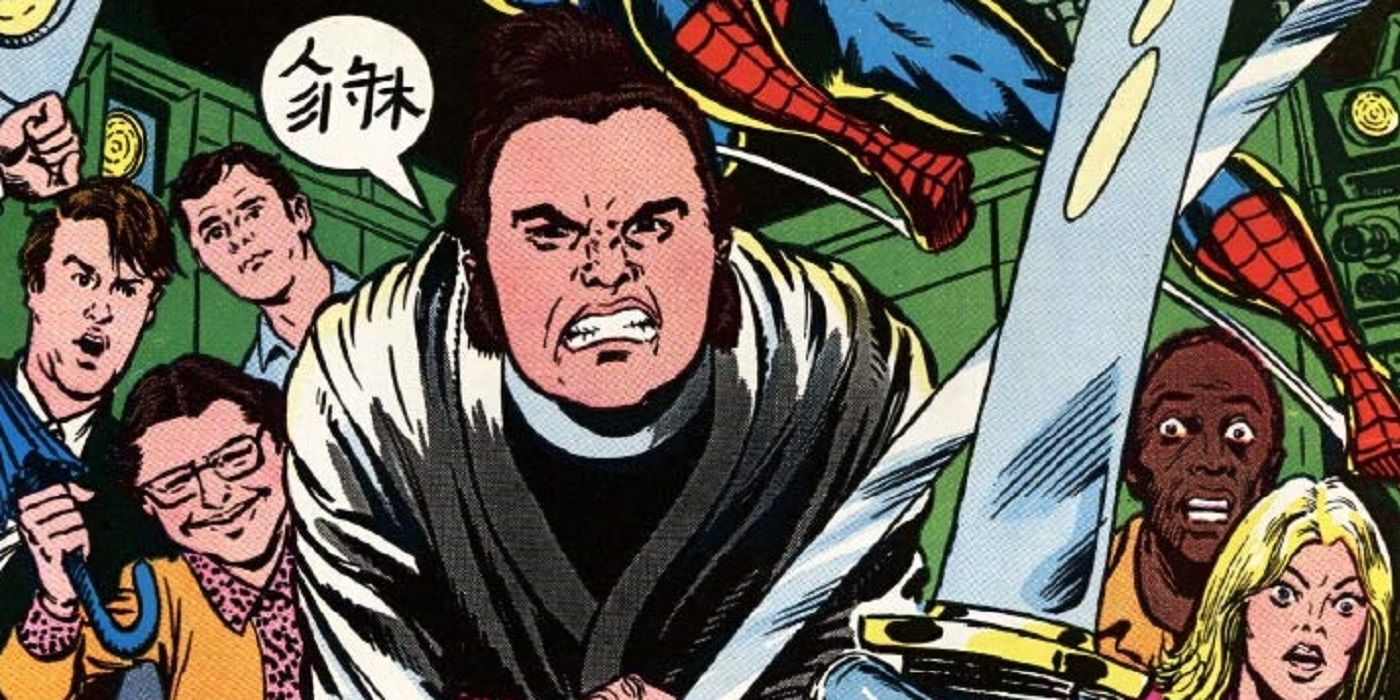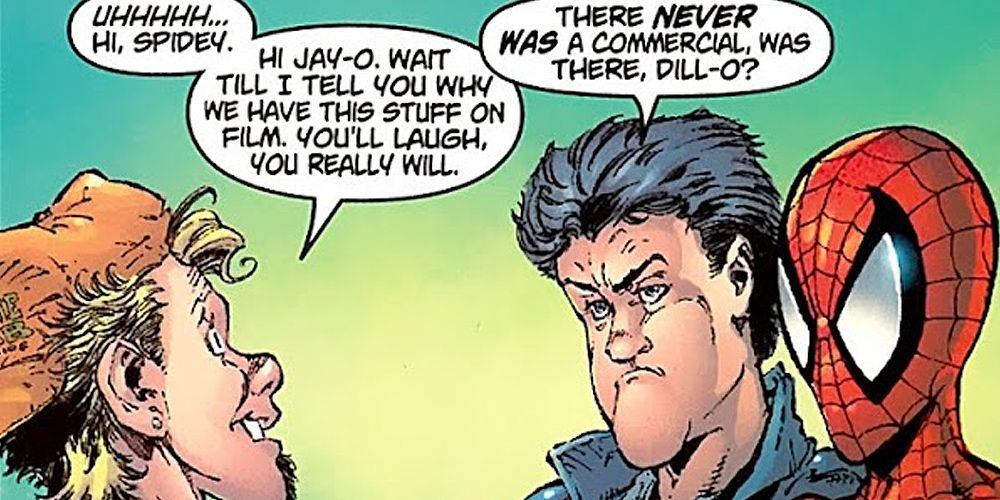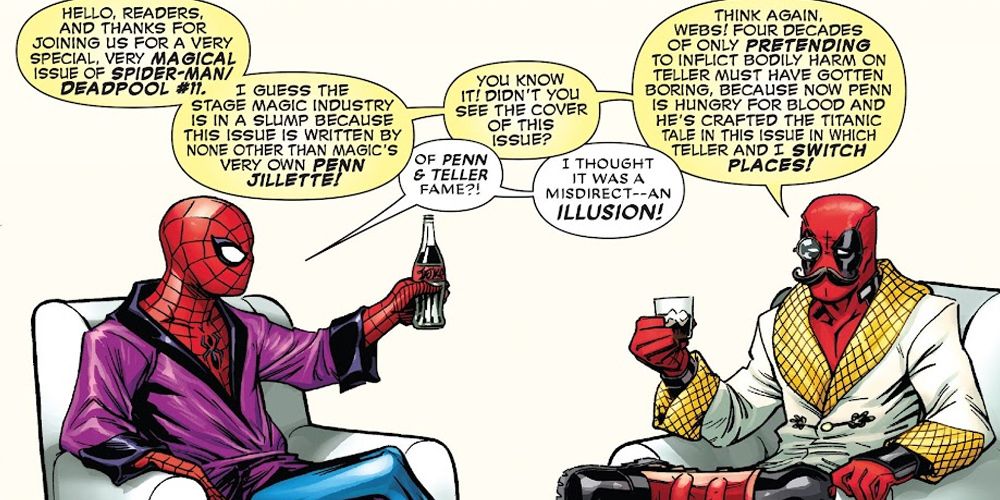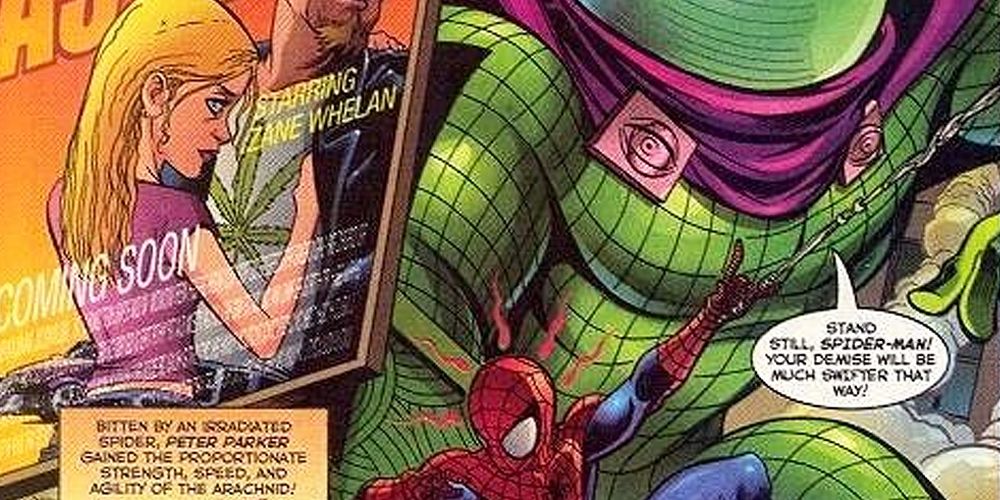Spider-Man has been around for sixty years and counting. Peter Parker has often starred or guest-starred in many titles simultaneously and, as a result, more stories feature him than any other Marvel Comics character. With such a long history, some of Spidey's stories understandably feel out-of-place today.
Unlike other superheroes, Spider-Man doesn't have many politically incorrect moments. However, he embraced fads and story conventions that didn't age well. This can make even Spidey's most legendary stories feel anachronistic. In most cases, readers overlook the dated trends, but sometimes, even a timeless character ages poorly.
Updated on March 16, 2023 by Angelo Delos Trinos: Spider-Man has too many hilariously bad and terribly aged adventures for one list to cover. From adventures that chased outdated trends to highly questionable crossovers, Spider-Man has done it all. This list has been expanded to include five more ridiculous stories, but these aren't the last of Spidey's weirdest tales.
15 The Living Brain Isn't So Menacing Anymore
Amazing Spider-Man #8 (1964) written and edited by Stan Lee, penciled and inked by Steve Ditko, and lettered by Art Simek
There are many classics in Spider-Man's early years, but Amazing Spider-Man #6 isn't one of them. Here, Spider-Man fought a robot with the "greatest mechanical brain ever built." When two criminals jostled the controls, they sent the robot, called "the Living Brain," on a rampage.
The Living Brain doesn't look very impressive when compared to other robots Spider-Man fought before and after it. This robot also operated like an oversized toy, unable to even go down a flight of stairs. It could be argued that of the Marvel Universe's many robotic menaces, The Living Brain aged the worst.
14 Spider-Man's Space Adventure Needs Updated Science
Amazing Spider-Man #1 (1963) written and edited by Stan Lee, written, penciled, and inked by Steve Ditko, colored by Stan Goldberg, and lettered by Jon D'Agostino
In Spider-Man's highly influential and important first solo issue, readers found him rescuing astronaut John Jameson. His capsule had entered a decaying orbit that would have sent him crashing to Earth. Spider-Man hitched a ride on a jet to intercept the capsule. The comic's science was so laughably bad that it hurts.
Technology dated this story. The space capsule's design is outdated, and its appearance locks the story firmly in the '60s. There's a good reason that no one remembers this was John Jameson's first appearance. He's better remembered as the Man-Wolf, or the astronaut who somehow got super strength thanks to space radiation.
13 Mary Jane Watson's Dancing Gig Aged Terribly
Amazing Spider-Man #59 (1968) written and edited by Stan Lee, penciled by John Romita Sr. and Don Heck, inked by Mike Esposito, and lettered by Artie Simek
If there's one hero who will incorporate pop culture trends into stories, it's Spider-Man. Amazing Spider-Man #59 was basically a superhero adventure set in an exotic dancing club. The equally heroic Mary Jane Watson got a job as a dancer there, unaware that it was a front for organized crime and blackmail.
Part of Mary Jane's job was to take pictures of partying city officials with a camera that primed them for brainwashing. Today, not only would patrons laugh at the "free photo," but there might be no worse front than a club. Clubs are still around today, but they're nowhere near as influential as they were in the late '60s.
12 Spider-Man's Photorealistic Cover Isn't As Special As It Was
Amazing Spider-Man #262 (1984) written, penciled and inked by Bob Layton, inked by Carlos Garzon, colored by Christie Scheele, and lettered by Rick Parker
Amazing Spider-Man #262 featured a photographer discovering Spider-Man's secret identity. He caught Peter changing back into civilian clothing and snapped a picture. To hammer in how big a deal this was, the issue's cover recreated the moment using a photo of actor Scott Leva, taken by Elliott Brown. At the time, this was cool and truly special.
Unfortunately, the story is passé in modern society. While someone might take a picture of Peter and post it online instantly, it would hardly prove anything. It doesn't help that today's cosplayers create scenes like this every day. Amazing Spider-Man #262 works best as a time capsule of gimmicks that lost their appeal a long time ago.
11 A Collapsing New York City Is Much Harder To Take Now
Web of Spider-Man #6 (1985) written by Danny Fingeroth, penciled and inked by Mike Zeck, penciled by Mike Harris, inked by Bob Layton, Dave Simmons, Jim Mooney, colored by Bob Sharen, and lettered by Phil Felix and Rick Parker
The story for Web of Spider-Man #6 is fantastic. It shows the ramifications of The Beyonder transforming an office building into gold. To make a bad situation worse, New York City has to turn to the villainous crime lord Wilson Fisk (or the avaricious Kingpin) to keep the economy from collapsing from the sudden influx of gold.
After the September 11, 2001 terror attacks, this kind of premise became a little harder to read. The comic doesn't really capture the devastation inside a collapsing building. There are many survivors, and Spider-Man only failed to save one person. While the tragedy that came after it made it harder to handle, it's still a good story.
10 Ghost Rider Wasn't Really Himself
Marvel Team-Up #15 (1973) written by Len Wein, penciled by Ross Andru, inked by Don Perlin, colored by Glynis Wein, and lettered by John Costanza
In 1971, the notoriously conservative Comics Code Authority lightened up on supernatural depictions in comics. Ghost Rider was the most popular hero to emerge from this change. Over time, Ghost Rider developed into an anti-hero who was almost evil at times. This was the Ghost Rider who fans knew and loved.
Early in his career, Johnny Blaze was in control of the Ghost Rider. That's why he was weirdly noble and heroic in Marvel Team-Up #15. Although it doesn't really feel like a Ghost Rider story, his team-up with Spider-Man is still fun. The panel showing the Orb without his helmet is worth reading the comic at least once.
9 Spider-Man & Mysterio Got Disco Madness
Spidey Super Stories #46 (1980) written by Jim Salicrup and Sharon Webber, penciled by Winslow Mortimer, inked by Ricardo Villamonte, and lettered by Ray Holloway
It's not fair to be too hard on a comic aimed at children like Spidey Super Stories #46. Its first story made numerous references to disco while also coming out eight months after Disco Demolition Night effectively killed the disco craze in 1979. The comic didn't age well, even in the same year it came out.
Here, Spider-Man chased crooks into a disco. Mary Jane took him back there later to join a contest to be in a movie. This was actually a plot by the ominous Mysterio to kidnap Mary Jane and rob banks. The story itself is a standard fight between Spider-Man and Mysterio, but the disco backdrop made it more awkward than intended.
8 Spider-Man Introduced Marvel's Strange Trucker Hero
Peter Parker, the Spectacular Spider-Man #13 (1977) written by Bill Mantlo, penciled by Sal Buscema, inked by Mike Esposito, colored by Janice Cohen, and lettered by Annette Kawcki
In 1977, America was inexplicably caught up in a trucking sensation. This peaked with the film Smokey and the Bandit. During this time, Marvel introduced its first trucker superhero: Razorback (aka Buford Hollis). In brief, Razorback is a superhero who belongs to the cringeworthy Bronze Age and nowhere else.
Even at the craze's height, Razorback was a corny cash grab. Razorback was so lukewarmly received that he was limited to cameos. In the '80s, the trucking craze and Razorback faded from the public zeitgeist. His story somewhat developed with brief stints by joining forces with Hulk's genderflip, She-Hulk.
7 The Spider-Mobile Is As Corny As The Day It Debuted
Amazing Spider-Man #130 (1974) written by Gerry Conway, penciled by Ross Andru, inked by Frank Giacoia and David Hunt, colored by Petra Goldberg, and lettered Art Simek
To this day, the Spider-Mobile is still considered one of the most embarrassing additions to Spider-Man's mythos. Spider-Man is one of New York City's most agile and flexible heroes. Giving him a decked out buggy was just redundant. Nevertheless, Johnny Storm of The Fantastic Four thought it was exactly what Spidey needed.
The Spider-Mobile was a transparent and failed attempt to give Spider-Man merchandising options, especially for toy manufacturers. It was so corny that, even in its debut issue, everyone mocked it. After a few appearances, the Spider-Mobile disappeared and only occasionally resurfaced to be laughed at again.
6 The Hypno-Hustler Is Laughably Dated
Peter Parker, the Spectacular Spider-Man #24 (1978) written by Bill Mantlo, penciled and inked by Frank Springer, colored by Bob Sharen, and lettered by Joe Rosen
It may be hard to remember now, but Marvel went all in on the disco craze. A few years before Dazzler debuted, Spider-Man fought the Hypno-Hustler in Peter Parker, the Spectacular Spider-Man #24. Peter Parker's friends interrupted his studying to see a disco sensation, the Hypno-Hustler, who turned out to be a villain.
The Hypno-Hustler could hypnotize whole dance floors with his gear. He then robbed the hypnotized dancers. This issue also featured Peter dressing up in John Travolta's white suit from Saturday Night Fever. It might have been better to focus on Peter making up college credits, since that stayed relatable and relevant.
5 Aunt May Became Galactus' Herald
Marvel Team-Up #137 (1984) written by Michael Carlin, penciled by Greg LaRocque, inked by Mike Esposito, colored by Bob Sharen, and lettered by Joe Rosen
Aunt May deserves more solo stories, but Marvel Team-Up #137 is not what fans wanted. Here, the immortal and powerful Galactus accidentally turned Peter's elderly aunt into his new herald. He then charged her to raid convenience stores so he could feed on snacks. To top it all off, Aunt May was reborn as "The Golden Oldie."
The Golden Oldie was so ridiculous that the comic ended with Peter, Galactus, and the comics' actual creative team waking up from a dream. Although this was arguably the only way The Golden Oldie's time as Galactus' snack-stealing herald should end, it's hard to deny that the conclusion still felt like a cop-out.
4 Spider-Man Teamed Up With The Original Saturday Night Live Cast
Marvel Team-Up #74 (1978) written by Chris Claremont, penciled and edited by Bob Hall, inked and colored by Marie Severin, lettered by Gaspar Saladino and Annette Kawecki
In 1978, Peter Parker was still trying to mend things with Mary Jane. To give Mary Jane a good time, Peter took her to see Saturday Night Live, hosted that week by Stan Lee. When the Silver Samurai attacked, the "Not-Ready-For-Prime-Time Players" helped Spider-Man save the day.
Celebrity cameos in comics never age well. What's more, John Belushi's "Samurai Fatuba" persona was an offensive caricature of Japanese people. The SNL cast changed so much that new readers wouldn't really understand the crossover. Marvel also can't reprint the comic because they lost the rights to the actors' likenesses.
3 Spider-Man & Jay Leno Beat Up Ninjas
Jay Leno and Spider-Man: One Night Only! (2004) written by Ron Zimmerman, penciled by Greg Capullo, inked by Danny Miki, colored by Dan Kemp, and lettered by Wes Abbot
Spider-Man had quite a lot of adventures with late night talk show hosts, but his team-up with Jay Leno was the most hilariously bad. Here, Peter attended a taping of Jay Leno's show for the Daily Bugle, only for it to be attacked by ninjas. Jay Leno then saved the day with his secret martial arts and motorcycle riding skills.
The three-part Jay Leno and Spider-Man: One Night Only! was a transparent puff piece for Jay Leno. Not only did his talk show quips overshadow Spider-Man's signature humor, but he was depicted in the most self-satisfied and badass ways possible. The crossover was so full of itself that it's impossible not to laugh at it.
2 Spider-Man Let Penn & Teller Hijack The Comic
Spider-Man/Deadpool #11 (2016) written by Penn Jillette, penciled and inked by Scott Koblish, colored Guru-eFX, and lettered by Joe Sabino
Celebrity crossovers tend to be too self-satisfied for their own good. Case in point, Spider-Man/Deadpool #11 (which deserves a revival). Here, magicians/skeptics Penn and Teller teamed up with Deadpool and Spider-Man, respectively. Penn wrote the comic, so he and Teller inexplicably outshone the heroes.
Penn somehow outplayed Deadpool's fourth-wall breaking and wits, while Teller saved a bumbling Spider-Man from C-List villain Tarot. Even in 2016, the crossover aged terribly because of how much of a painfully obvious vanity project it was. Penn conflating his vainglorious tirades with jokes was simply the worst.
1 Spider-Man Fought Marijuana At The Government's Request
Fast Lane (1999) written by Glenn Herdling, penciled by Gregg Schigiel, inked by Richard Case, colored by Paul Mounts, and lettered by Chris Dickey
Not too long ago, the use and selling of marijuana was seen as a crime deserving of unfairly heavy sentences. In 1999, the White House Office of National Drug Control Policy collaborated with Marvel to make anti-cannabis comics. The resulting PSA featured Spider-Man lecturing about how weed was worse than Mysterio.
Fast Lane exaggerated marijuana's side effects, and preached about how users were losers. While it's hard to find today, the fear-mongering PSA was seen in literally every comic (Marvel or otherwise) from 1999 to 2000. Fast Lane was so sanctimonious that it aged terribly even before marijuana was legalized a few years later.

